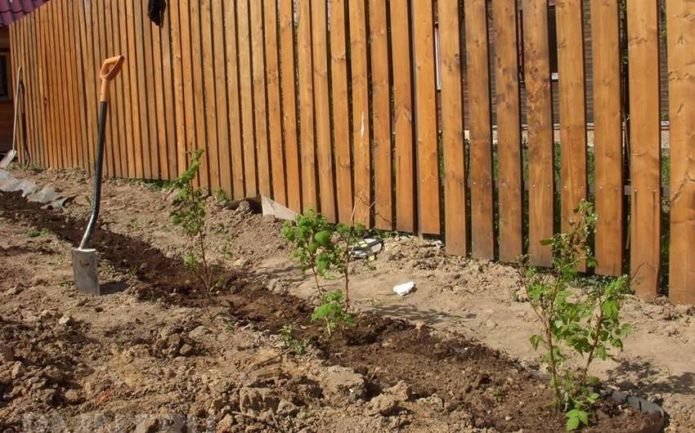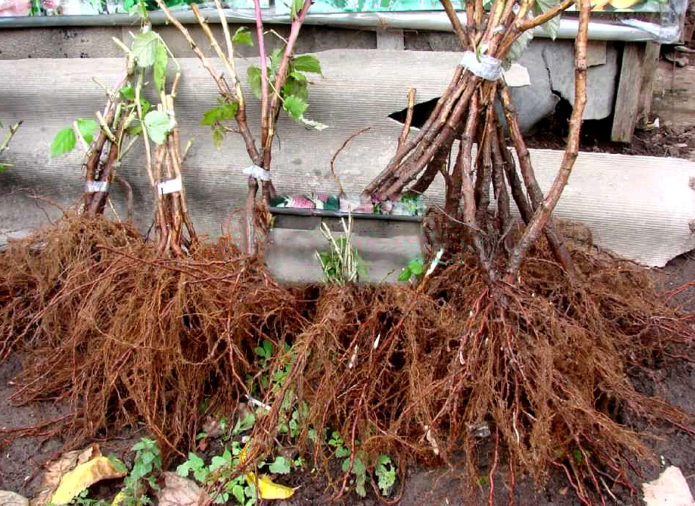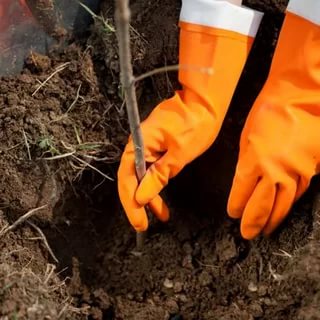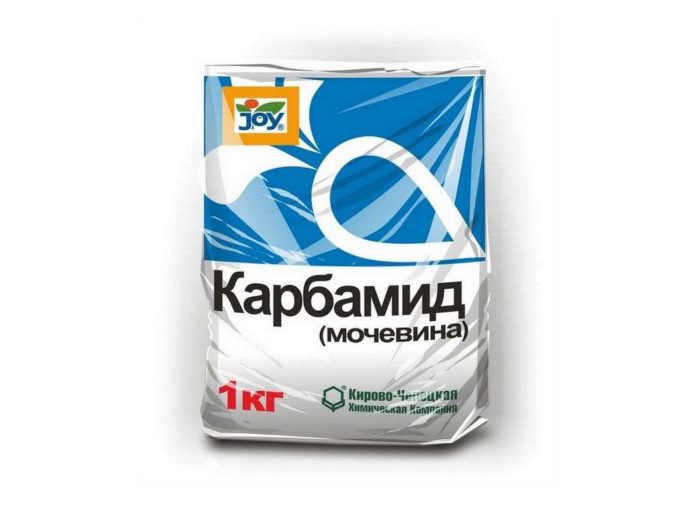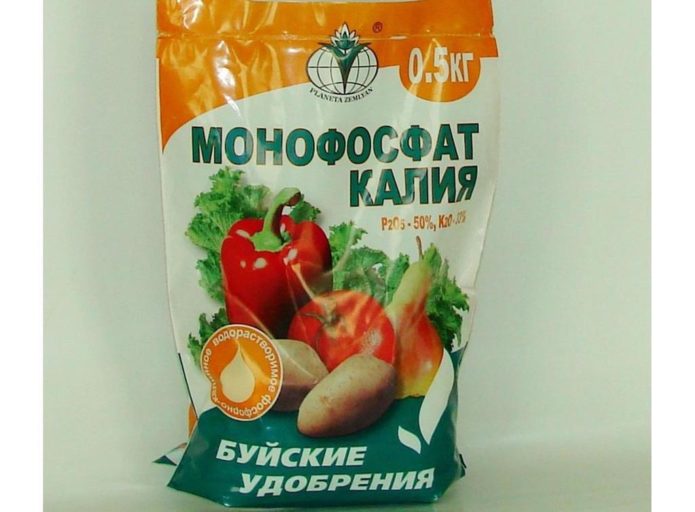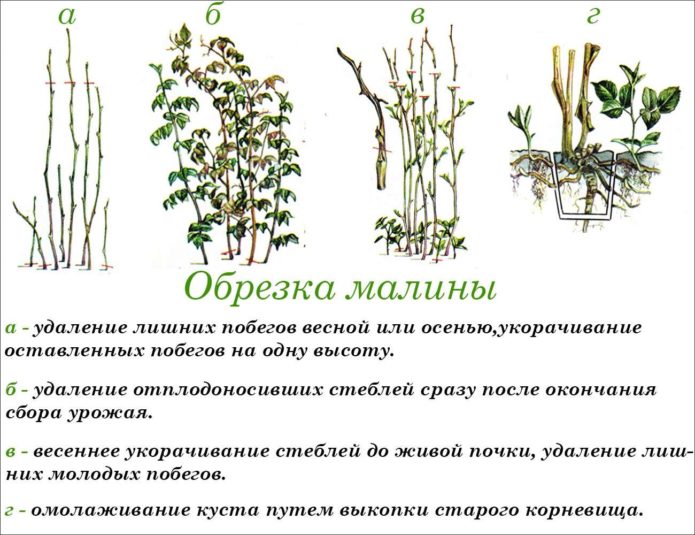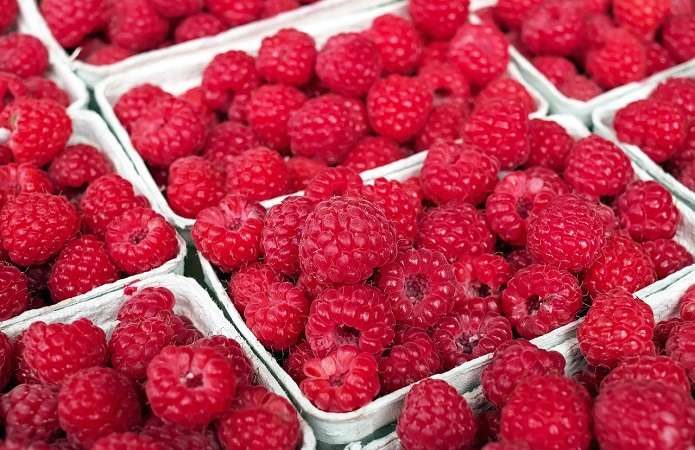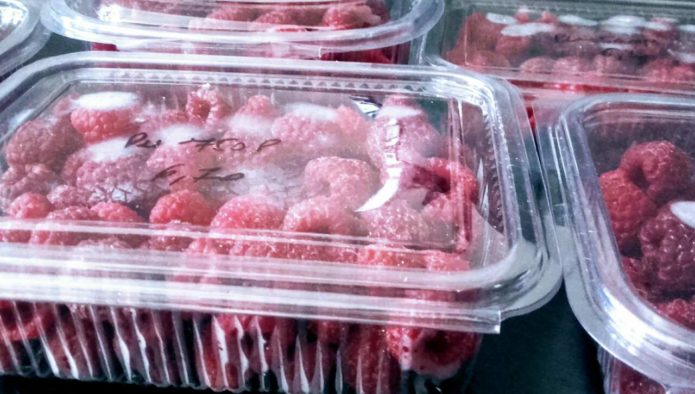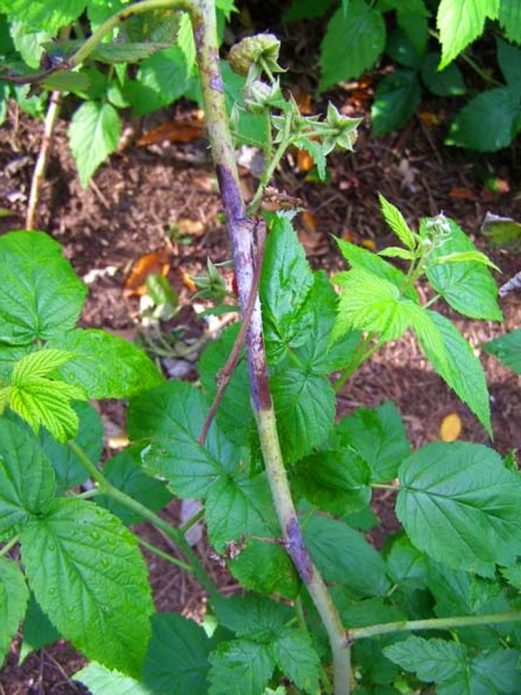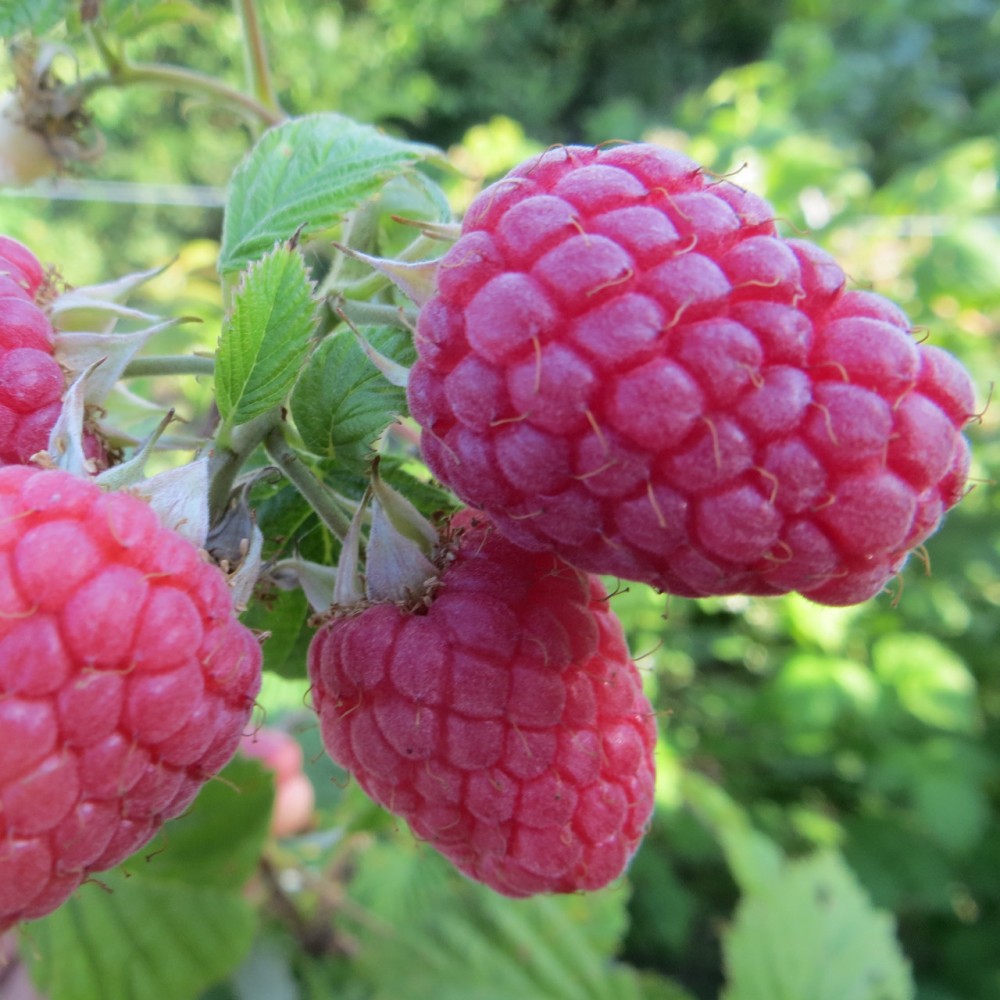The brilliant raspberry variety was bred specifically for the harsh Siberian conditions. Its dense and tasty berries have a universal purpose and are suitable both for fresh consumption and for drying, freezing and other types of processing. For those who are not spoiled for variety, Siberians, the brilliant raspberry is a good option for obtaining vitamin products with an almost guaranteed result. It is not very easy to grow it on the site, but also not too difficult. You should only adhere to the recommendations set out below.
Content
Breeding history, description and characteristics of the brilliant raspberry variety
As indicated in the description of the State Register, the Brilliant raspberry variety was bred by breeders of the Siberian Horticultural Research Institute (Barnaul) by crossing the American black raspberry Cumberland (it owes Brilliant resistance to frost, drought, diseases and pests) and the British Molling Landmark (from it the color and taste of berries, lack thorns on most of the shoot, early maturity). The variety was transferred for state variety trials in 1989 and in 1993 was included in the State Register. Zoned in the Volgo-Vyatka, Ural, West Siberian and East Siberian regions. The originator is, of course, the above-mentioned Institute of Horticulture of Siberia named after M.A.Lisavenko. And despite this, the information about the variety in the State Register and the description on the originator's website have some significant inconsistencies.
Originator - an individual or legal entity who created, bred, or identified a plant variety or animal breed and (or) ensures its preservation, but is not a patent holder.
The bush is medium-sized (1.3-1.5 meters), spreading, medium-sized shoots, easily bending, with a drooping top. Shoot-forming ability is low (according to the originator - medium). Shoots are greenish-white with a waxy coating and soft thorns at the base. The variety has high winter hardiness and drought resistance (according to the originator, these indicators are average for the variety), as well as resistance to damping, desiccation, diseases and pests. The originator notes a slight infestation with purple spot and shrinking of berries in dry years. Self-fertility is high, but the presence of pollinators is encouraged.
Ripening of berries - medium early, begins in the first decade of July and lasts until the end of the month... During this time, 6-7 harvests take place with a total yield of up to 35 c / ha. The originator on its website declares a significantly higher yield - 8.6 t / ha on average and maximum - 10.9 t / ha.
The berries are large (2.6-5.6 grams), hemispherical, dense, shiny. They hold well on the stalk, do not crumble.The color of the berries, as described by the State Register, is black, and according to the originator and some sellers of seedlings, it is crimson and dark red. The taste is pleasant, sweet and sour, with aroma. Tasting score - 4.6 points. The purpose is universal. Due to the good density of berries in jam, they do not boil, do not stick together and remain intact.
Advantages and disadvantages of the variety in comparison with similar
In the State Register there are 4 varieties with similar admission regions and ripening periods, and two of them - Barnaulskaya and Zorenka Altai - were bred by the same Research Institute of Horticulture in Siberia as Shinyaya.
Table: advantages and disadvantages of the brilliant raspberry variety in comparison with similar
| Raspberry variety | Advantages | disadvantages |
| Shiny |
|
|
| Barnulskaya |
|
|
| Zorenka Altai |
|
|
| Balm |
|
|
| High |
|
|
Despite the rather long cultivation period of the variety and a solid list of advantages with practically no drawbacks, it was not possible to find discussions on the experience of its cultivation on the forums of gardeners. Several references containing the citation of the descriptions of the variety in the State Register and on the originator's website cannot benefit the gardener and therefore we will not give them here.
Features of agricultural technology
Raspberries are demanding on growing conditions, so before planting, you should familiarize yourself with some of the nuances.
Landing
Particular attention should be paid to the choice of a place for the future raspberry tree, the quality of the planting material and the choice of the correct planting dates.
Where to plant
A place for planting is chosen well-lit or in a slight partial shade, it should not be damp and swampy. Loves raspberries loose and humus-rich soil. Sandy loam, sandy (with good fertilization), loam are suitable. On heavy soils, raspberries grow worse. The acidity of the soil should be within the pH range of 5.5-7. Compliance with crop rotation is also important. You should not plant raspberries after potatoes, tomatoes, strawberries. The best predecessors are legumes, pumpkin, zucchini, green manure. In one place, raspberries grow no more than 7-8 years, after which it should be transferred to another area.
At least one month before planting, they begin to prepare the site. For this:
- Clears the area from weeds. If green manures were planted on it, then they are mowed and evenly distributed over the site.
- Spread humus evenly in the amount of 20 kg / m2, superphosphate - 60 g / m2, ash - 0.3-0.5 l / m2.
- They plow or dig up the ground, embedding fertilizers in it.
What to plant
As a rule, seedlings are bought in the fall, and it is better to do this in nurseries. Choose plants with a well-developed root system and healthy stems with a diameter of 8-10 mm. If planting is planned for spring, then before that time the seedlings are buried in a trench of small (15-20 centimeters) depth, laying them obliquely. Plants fall asleep 2/3 of the length and cover with spruce branches.
When to plant
Planting dates are chosen either in early spring, before the onset of sap flow, or in the fall, 3-4 weeks before the onset of cold weather. Seedlings with a closed root system can be planted at any time from spring to autumn. And also at any time you can transplant raspberries from one area to another. In this case, you need to dig it out with a clod of earth.
How to plant
Most often, raspberries are planted in rows. The distance between them is chosen within 1.2-1.8 meters, and in the row between plants - 0.7 meters. Since the shoots of Shiny raspberry usually bend under the weight of the crop and their own weight, it is better to immediately install a trellis along the row. To do this, install wooden or metal poles 1.5 meters high above ground level with an interval of 3-4 meters. A wire or rope is pulled on them at a height of 0.5 meters and at a height of 1.2 meters, to which raspberry shoots are subsequently tied.
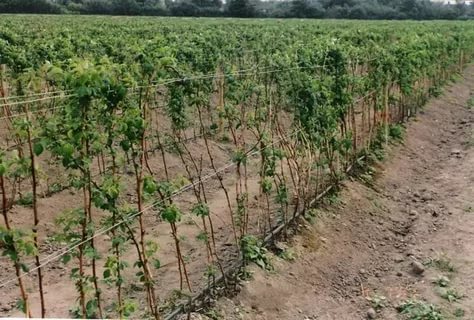
Since the shoots of Shiny raspberries usually bend under the weight of the crop and their own weight, it is better to immediately install a trellis along the row
The planting process looks like this:
- 2-3 hours before planting, the roots of the seedlings are soaked in water with the addition of growth stimulants (Heteroauxin, Kornevin, Epin).
- On the mark, they dig holes measuring 30 x 30 x 30 centimeters.
- A small mound is formed in each hole, on which the roots of the seedling are placed and covered with earth. The soil is well compacted, making sure that the root collar of the seedling is at the soil level as a result.
- A trunk circle is formed around each seedling.
- Plants are cut to a height of 30-40 centimeters.
- Water abundantly until the trunk circle is completely filled. After absorbing the liquid, watering is repeated twice more.
- The next day, the soil is loosened and mulched with humus, compost, rotted sawdust, etc.
Growing and care
In the future, in order to maintain the normal growth of raspberries and its productivity, it is necessary to consistently and timely carry out the usual agrotechnical measures.
Watering
Despite the drought tolerance of Brilliant, of course, the best results will be achieved with regular watering. Usually, raspberries are watered 1-2 times before flowering and then at intervals of two to three weeks, depending on weather conditions. It is better to water in the evening, when the heat subsides and the moisture evaporates less. If the rows of raspberries are located on a horizontal section, then for convenience you can make rollers common to all bushes on both sides and at the ends of the row. Then, when watering, the hose is placed in such a common groove and filled with water completely. If the site is inclined, then you will have to make near-trunk circles for each bush separately. Good results are obtained by using drip irrigation systems. In addition to such watering in hot weather, you can spray the bushes.
Top dressing
Raspberries need abundant feeding, especially they love organic matter. Fertilizers are applied according to the following scheme:
- In the spring, before watering, urea is evenly scattered over the entire area of the trunk circle or the common groove in an amount of 20-30 g / m2.
- At the beginning of June, potassium monophosphate is introduced in dissolved form during watering. Consumption rate - 10-20 g / m2.
- From the beginning of the formation of berries, raspberries are regularly fed with liquid organic fertilizers at intervals of 2-3 weeks. For this:
- Insist in warm water for 7-10 days mullein (2: 10), bird droppings (1: 10) or fresh grass (1: 2).
- The resulting concentrate is filtered and used for fertilization in the amount of 1 l / m2... In order not to burn the roots, it is preliminarily diluted with water (1: 10).
- In autumn, superphosphate is added under the digging in the amount of 30-40 g / m2.
- And you can also use complex fertilizers for berry crops, which include a full set of necessary macro- and microelements. Directions for use and dosage are indicated in the accompanying instructions.
Video: feeding raspberries with chicken droppings
Trimming
After harvesting, cut out all fruiting, as well as dry and broken shoots. All the young leave until spring. In the spring, they cut out frost-damaged shoots, as well as normalize the bush. For Shiny raspberries, 5-7 strong shoots are left, and the rest are removed. The tops of the remaining shoots are pinched by 10-15 centimeters, which provokes the appearance of lateral branches, on which fruit buds are also laid.
Harvesting and using the crop
The berries are harvested as they ripen in dry weather. It is better to do this early in the morning while the berries are cool, but there should be no dew. Only ripe berries are harvested, which are easily separated from the fruit. They are carefully removed with three fingers, twisting slightly. There should be no more than 5-6 berries in the palm of your hand at the same time. They are neatly placed in plastic containers or birch bark boxes. As soon as possible, the berries are placed in the refrigerator, where they can be stored for several days.
Options for further use of the crop:
- Freezing. For these purposes, choose dense, undamaged berries.
- Drying. For this, electric dryers with warm air blowing are used. Drying mode - 40-50 ° C.
- Making preserves, jams, compotes.
- Fresh consumption.
Preparing for winter
In regions with snowy winters, it is enough to tie the raspberry shoots into bunches and tilt them to the ground, having previously covered them with humus or compost. In the same regions where severe frosts are possible during a snowless winter, it is advisable to additionally cover the shrub with spunbond or film. In the spring, when the snow melts, the raspberries are lifted and tied to the trellis, after having carried out pruning.
Video: caring for raspberries in spring
Diseases and pests
Since both the State Register and the originator claim immunity to diseases and pests, we will focus on measures for general sanitation and prevention. And also, since the originator claims some susceptibility to the purple spot variety, we will briefly describe this disease.
Prevention
Disease and pest prevention measures are simple and not time consuming:
- Compliance with crop rotation.
- Sanitary pruning.
- Rejection of planting material with signs of disease.
- Avoiding thickening of the landings.
- Prevention of waterlogging and waterlogging of the soil.
- Timely collection of ripe berries. Overripe berries are a source of rot.
- In early spring, after the opening of the bushes, preventive treatment with Nitrafen is carried out.
Purplish (purple) spotting
The scientific name for this disease is didymella, after the name of the pathogen fungus (Didymella applanate). Fungal spores enter plants with air masses, streams of water and underground insects. But it affects only weakened and frail bushes, which happens in the absence of proper care. Healthy plants are not affected by the fungus.
Infection occurs when there are cracks, scratches and other damage on the shoots.Fungal spores germinate in them in the presence of favorable conditions - high humidity, moderate (up to +20 ° C) temperature. The disease begins with the appearance of small dirty purple spots in the lower part of the shoots, which, growing, ring the entire stem and spread upward. After that, the leaves are affected, on which brown spots with a yellow edging are formed. As a result, the stems crack, break, the bush dries up.
Preventive measures will save the gardener from this problem. But if, nevertheless, affected shoots are found, then they should be cut out and burned without regret. After that, treat the raspberry with the Strobi fungicide, which not only stops the development of the disease, but also prevents its further spread.
Raspberry Brilliant, according to the descriptions, has more advantages than other similar varieties. Among them, she is the clear leader. The lack of feedback on the forums about the experience of growing raspberries of this variety restrains. But if there is an opportunity to purchase her seedlings, then it is worth trying to grow this raspberry on the site - perhaps it will suit your conditions.
